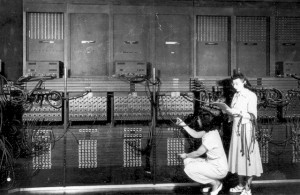Computers
One Processor to Rule Them All
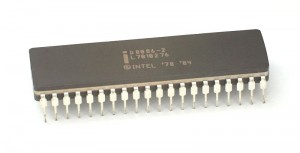 June 8, 1978
June 8, 1978
Intel introduces the 16-bit 8086 processor with clock speeds of 10, 8, and 5 MHz. The 8086 would become the basis for the series of processors used in “IBM Compatible” PCs and the x86 family (later marketed under the name “Pentium”) that would dominate the market in the PC era. Ironically, however, it was the modified 8-bit 8088 processor that was used in the original IBM PC, primarily due to factors that would reduce overall cost. The current line of Intel “Core” processors are still based on the same architecture that was introduced with the 8086.
Really Geeky Modem Technology Patented
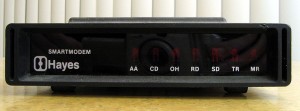 June 7, 1983
June 7, 1983
Michael Eaton is granted a patent for the AT Command Set for Modems, which had created a standard language for interacting with modems. Two years earlier, the rights for this command set were purchased by the Hayes Corporation and incorporated into the Hayes Smartmodem 300 as the “Hayes Command Set.” The protocol will become an industry standard used for years to come.
In the early 90’s, needing to use modems so that I could connect to pre-Internet bulletin board systems, I learned the AT command set. I then used and supported modems extensively for about 15 years, and occasionally still do. Because I worked with modems so much, I used to be able to speak the AT command set in my sleep. I know, it impresses the ladies.
The Mac Gets Intel Inside
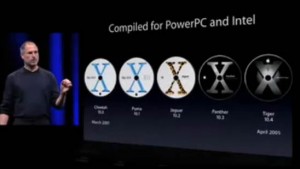 June 6, 2005
June 6, 2005
In a keynote address at Apple’s Worldwide Developers Conference, Steve Jobs announces that Macintosh computers will transition from PowerPC to Intel processors and demonstrates Mac OS X running on a computer with an Intel Pentium 4 processor. Jobs revealed at the time that Apple had been secretly preparing for a possible transition to Intel for many years. Unbeknownst to the public, for every version of Mac OS X released, Apple actually had prepared a version running on an Intel processor. By making the transition to Intel, Apple paved the way for the resurgence of the Macintosh computer by making it more compatible with software for Microsoft Windows.
The Apple II Enters the Market
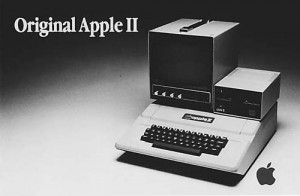 June 5, 1977
June 5, 1977
The original Apple II computer goes on sale. The Apple II featured an a 1MHz MOS 6502 processor, an integrated keyboard, a built-in BASIC programming environment, expandable memory (4K expandable to 48K), a monitor capable of color graphics, a sound card, and eight expansion slots. To include all these features in one discrete unit was highly innovative and the reason it is considered the first practical personal computer. However, in the spirit of the original computer hacker, the Apple II was also available as a circuit-board only, without keyboard, power supply, or case. A couple of years later, the combination of the Apple II series and the first “killer app” of the business world, the VisiCalc spreadsheet program, popularizes personal computers among business users. This sudden success of the “home computer” in the business world surprises established technology companies and eventually leads IBM to scramble to develop their IBM PC.
GIF is Not Peanut Butter
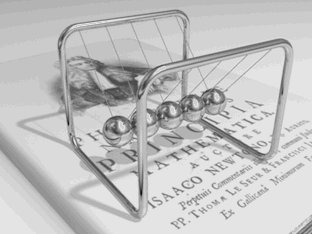 May 28, 1987
May 28, 1987
CompuServe releases the Graphics Interchange Format (GIF) standard as a new computer graphics file format. Due to color limitations, the GIF format is unsuitable for reproducing color photographs, but it is well-suited for more simple images such as graphics or logos with solid areas of color. This made it probably the most popular graphics format for the early Internet, until the famous “GIF licensing controversy” soured many designers to its use. The PNG format was developed in response as an alternative to GIF to get around the licensing issues. However, all relevant patents have since expired and the GIF format may now be freely used. Today it still sees widespread use, especially when simple animations are needed.
IBM Announces the “Defense Calculator”, Model 701
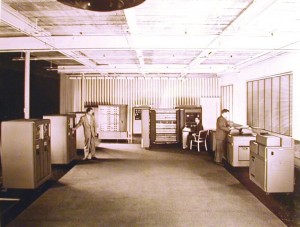
May 21, 1952
The IBM 701 was the company’s first commercial scientific computer, but I guess they figured that calling it a “calculator” would help it sell better. Perhaps they were right, because only expecting to sell five, the company ended up selling nineteen to government, large companies, and universities.
Contract Signed to Create ENIAC
The US Army and the University of Pennsylvania sign a contract to develop ENIAC, which would become the world’s first fully electronic computer, making the use of vacuum tubes rather than electromagnetic switches. The Army wanted to use this computer to calculate ballistic firing tables in World War II. However, ENIAC was not completed until after the war was over and went on to solve complex mathematical problems in fields such as atomic energy and rocketry.
Into the Ether(net)
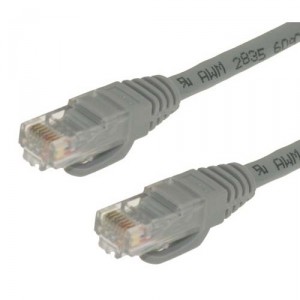 May 13, 1980
May 13, 1980
Digital Equipment Corporation, Intel, and Xerox jointly announce the Ethernet network specification. Ethernet is the predominant networking standard of today’s business and home networks.
The Z3
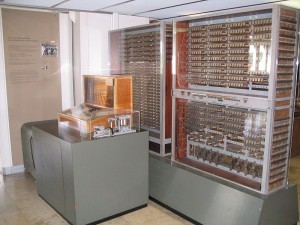 May 12, 1941
May 12, 1941
German engineer Konrad Zuse unveils the Z3, now generally recognized as the first fully functional, programmable computer. Because Germany was fighting World War II, not much was known about the Z3 until after the war. It was an electromechanical computer so it was not the world’s first fully electronic computer although plans were made to replace the mechanical relays with fully electronic switches. However, funding was denied by the German government because the Z3 was not considered important to the war effort. The Z3 was destroyed by Allied bombing in 1943 but a fully functioning replica was built in 1961 and is on display in the Deutsches Museum in Munich. Because the Z3 was the first programmable, fully automatic computer, some people consider Konrad Zuse the inventor of the modern computer.
Deep Blue Defeats Kasparov in Tournament Match
The IBM computer and artificial intelligence Deep Blue defeats reigning chess champion and one of the greatest chess players of all time, Garry Kasparov, in the 6th and deciding game of a tournament match, thus becoming the first time a computer defeated a chess champion in match play. A year earlier, Deep Blue had bested Kasparov in 2 individual games but Kasparov eventually won the match 4-2. This time, after being reprogrammed and upgraded, the 1997 Deep Blue, capable of calculating 200 million moves per second, won 2 matches out of 6 vs Kasparov’s 1 victory and 3 draws. After the defeat Kasparov asked for a rematch but IBM declined and retired Deep Blue.
The defeat of a reigning chess champion at the hands of artificial intelligence made headlines around the world and marked a milestone in the development of AI and machine learning. From this early landmark moment, the advancement of computing power and machine learning has created even more powerful artificial intelligence. Kasparov in 2016 stated that “Today you can buy a chess engine for your laptop that will beat Deep Blue quite easily”.
Honestly, I don’t see what the big deal is. Chess computers had been wiping the floor with me since I was in kid in the 80’s!

